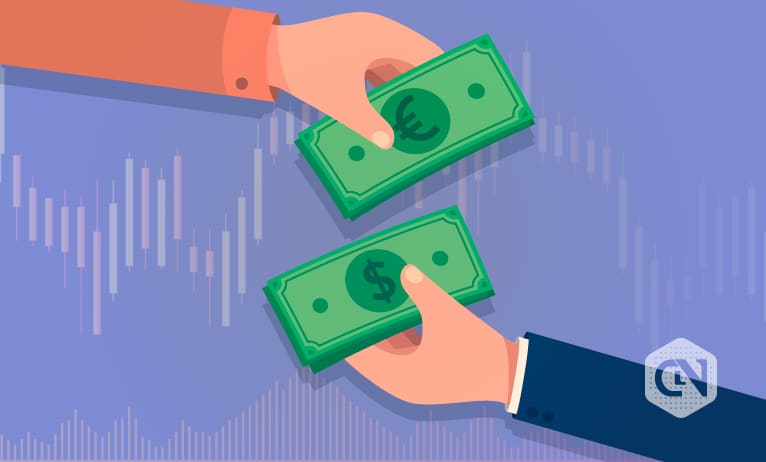Foreign Currency Swap
The idea of the swap is actually the simple exchange of property or any other assets between the parties. An agreement to exchange currency between two foreign parties is called Foreign Currency Swap. In it, they swap principal and interest payments on a loan made in one currency for a loan of equal value in another currency. The significance of doing such a swap is to secure cheaper debts. Adding to it, some institutions use currency swaps to minimize the exposure to anticipated fluctuation in the exchange rates.
One of the advantages of currency swaps is to exchange interest rate payments which are fixed on debt for payments that have a floating interest rate. The exchanges can be a fixed rate to floating rate and fixed rate for a fixed rate.
How does currency swap work?
It is clear from the name itself that there is an exchange of currency between two contracting parties. In a currency swap, a specific amount of foreign currency is borrowed by the first party from the counterparty that holds the foreign-denominated currency. At the same deal, it lends a corresponding amount to the other party in the currency that it possesses. Each party pays interest to the other party. The interest paid is similar in the currency of the principal it received. Both parties make exchange of the principal amount to each other after the end of the contract. The deadline of the contract varies with the deadline period going from 1 year to 30 years.
The point to be noted here is that they how these parties would find the counterparty for swaps. For that reason, there comes the role of intermediary i.e. financial institution. The financial institution from beginning to the end of the contract plays an active role. It charges a commission for the same.
The Federal Reserve gave the option of currency swap for borrowing purposes to several developing countries that were facing the liquidity crisis during the financial crisis of 2008. It benefited the developing countries to avail loans at a cheaper rate and hence lesser debt.
Swaps as trading
Swaps are not traded at the exchange market. They are the customized contracts that are traded over-the-counter (OTC) market between the private parties. These are carried out between the two parties by the firm or the financial institution. As it is carried out in the OTC market, there is always the risk involved of defaulting by the counterparty. In it, most of the time there is interest rate swapping. Considering a hypothetical situation, where Company A agrees to pay the Company B a predetermined fixed rate of interest on a specified date and a specified time period. Concurrently, the Company B agrees to make payments based on a floating interest rate to Company A on the same notional principal on the same specified date and same specified time period. These dates and times are called
settlement dates and settlement periods respectively. As swaps are customized contracts by nature, interest payments are made according to the defined agreement by the contracting parties. Using the techniques of swaps, the companies actually try to reduce their risk and hence becoming sure of their strategies. Swaps are financial derivatives.How to make money from swaps?
Suppose your firm is paying the fixed-rate interest and receiving the floating rate interest. And there is an increase in floating rate interest, then, the firm is receiving more and paying less. It acts as earning for the firm.
Another swap called a currency swap. Suppose a financial institution is acting as an intermediary in a currency swap between the contracting parties. It charges a commission from both parties for facilitating the transactions between them.
Swap Trading Strategies
The aim of this financial derivative is to modify the risk exposure. The Currency Swap helps the parties to provide protection against the exchange rate risk. The swap trading strategy helps the company to reduce the cost of getting loans at a place where they want to invest.
It also speeds up the process of getting funds and hence investing it wisely. There are different modes for swaps such as fixed-rate for fixed-rate and fixed-rate for floating-rate. Interest rate swaps enable a party to effectively convert the fixed or floating-rate obligation into floating or fixed-rate obligation. Firms can obtain the funds at a preferential rate by swapping the local currency in order to get foreign currency by swapping the currency.
Different forex brokerage firms provide variety of swap services. Prominent brokerage firms like MultiBank Group offer interesting benefits in addition to the main account types. MultiBank offers a swap-free Islamic account for Muslim traders, as well as a demo account for paper trading. Users are recommended to go through the MultiBank group review to know more about this intuitive platform.
Conclusion
Foreign currency swap can be used by the firms to widen their businesses abroad, where it doesn’t have a significant presence. It is an ideal way to protect the firms from exchange rate risk. Foreign currency swap combines the characteristics of interest rate swaps and currency forward rates to mitigate the exchange rate risk and interest rate risk. The motive of the currency swap is to reduce the cost of borrowing of foreign risk.
